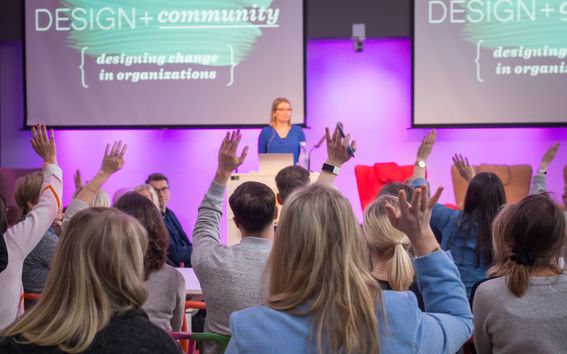Co-creating new skills on three levels

Aalto University was formed to break down boundaries and become an innovation university in a world where the role of universities is changing. We need to prepare our students for taking an active role in creating the work, organizations, and the world they want to live in. To create an education that equips learners to champion and smuggle state-of-the-art disciplinary practices into the organizations they join and create, we need to cultivate co-creation on three levels:
1. Joining forces with students to design learning with an impact
The ultimate test of learning is whether it affects our subsequent behavior. Sadly, much teaching falls short of this. Applying new knowledge already during courses can help here, but students may fail to recognize their improvement in active learning compared to traditional lectures. This is bad news for persistence and retention, as small wins and seeing progress are the best predictors of the vigour of further development activities. We need to design curricula where there are opportunities to both put new knowledge to use and recognize the effect that each step of learning brings with it. Giving students a seat at the table and gathering meaningful feedback will increase our odds for making this happen.
2. Co-teaching with new colleagues
The second form of co-creation we need to cultivate is co-teaching. Looking at newer institutions that have risen to the top in, for example, engineering education, collaborative development of teaching sets them apart from the crowd. Making co-teaching a norm requires developing ways of test-driving relationships – flexible first dates before asking for longer commitments for collaboration. While visiting lectures are standard practice, these put one or the other teacher clearly in the lead (and do not necessarily entail much integration of content). For example, short pop-in classes or courses can offer opportunities to try out new teaching concepts on a more equal footing. Coherent curricula and knowledge creation require new connections.
3. Flexing boundaries between universities and work life
Finally, we need new ways of collaborating beyond the lines of our campus: company cases, project-based courses, research projects, executive education, etc. While these tried-and-tested forms of interaction are a good start, traditionally they have been built on the rather one-directional exchange of skills. Can we co-create forms of learning where degree students and for example, alumni learn together, better than they would have separately? Recent changes to university legislation here in Finland open up new possibilities to experiment with. Pursuing this opportunity will be key in answering the call for meaningful work, successful organizations, and thriving societies.
Working together with others is not always quick, easy, or within our comfort zone. However, innovation is unlikely without it. With the help of co-creation, our universities can act as learning laboratories that benefit everyone involved.
Author:

Dr. Tua Björklund is a professor of practice at Aalto University Design Factory and the School of Engineering. As a platform for experimentation, Design Factory brings people together to co-create new forms of teaching, research, and practice in design and development.
Read more news

DeployAI Partners Gather for Heart Beat Meeting in Helsinki
The European DeployAI project's partners gathered for the Heart Beat meeting hosted by Aalto University Executive Education in Helsinki.
HRH Princess Maha Chakri Sirindhorn of Thailand visited Aalto University
During the visit, HRH and her delegation met with Aalto students and explored various activities.
Online AI course could boost study equality
Students at the School of Business believe that mastering Artificial Intelligence (AI) can be beneficial for both academic success and career prospects, as AI becomes increasingly integrated into daily life.